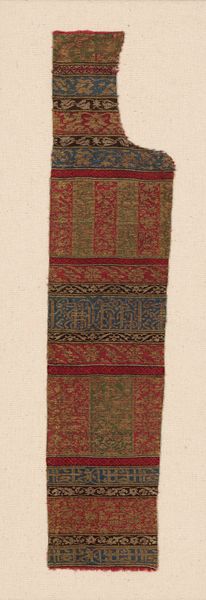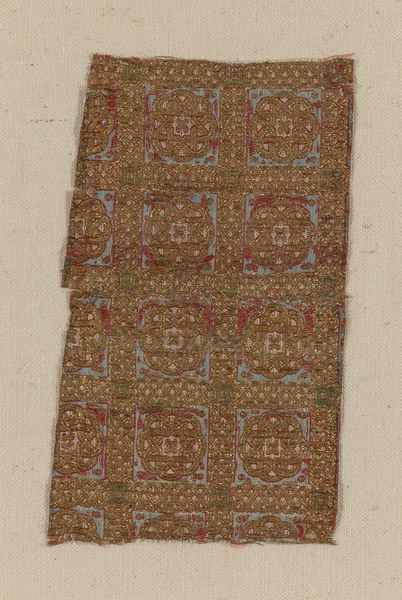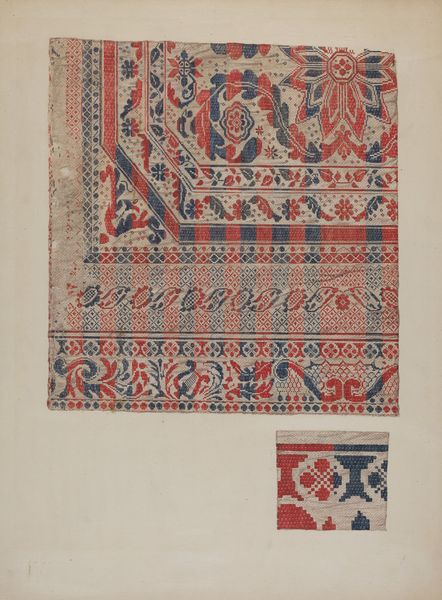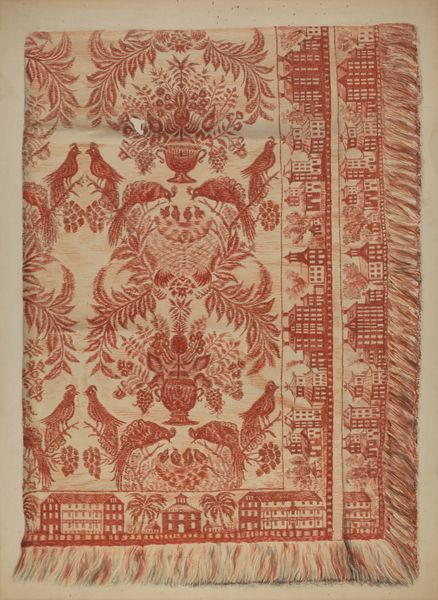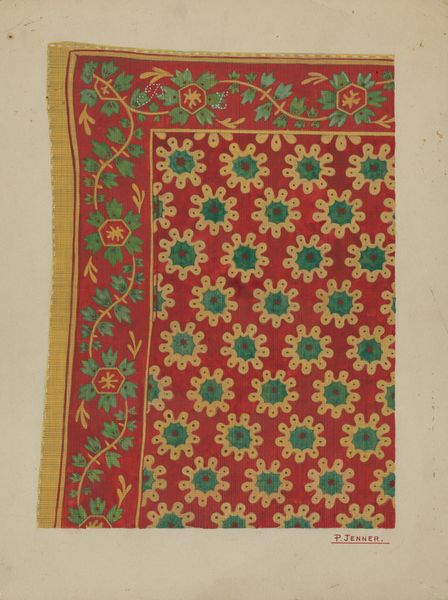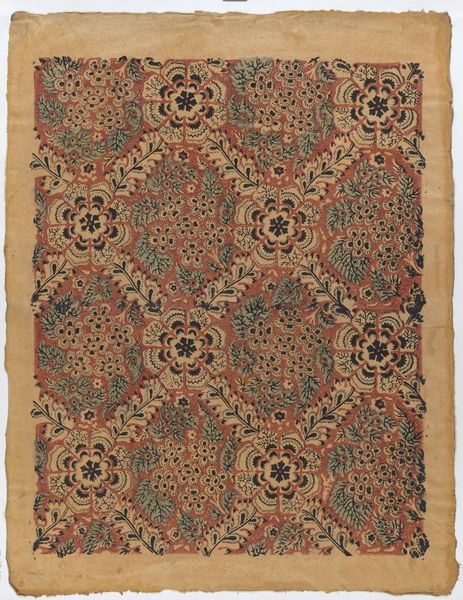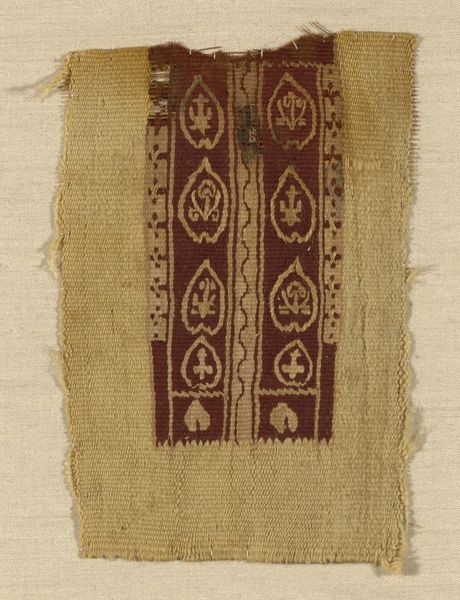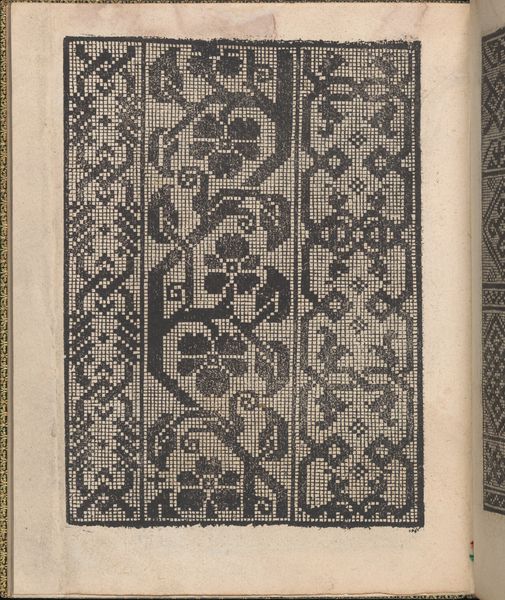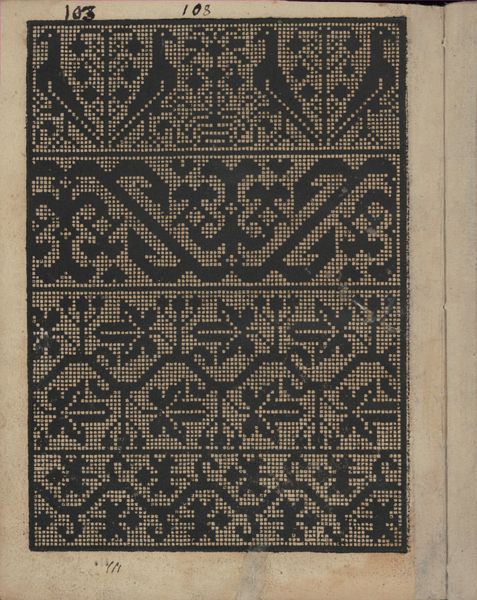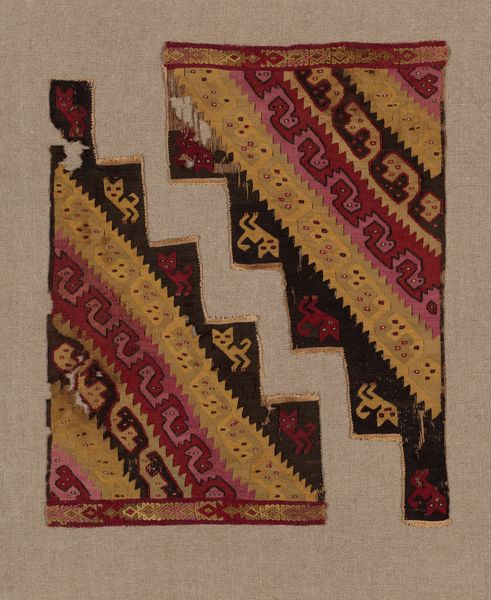
weaving, textile
#
weaving
#
textile
#
geometric
#
islamic-art
Dimensions: 53.1 × 21.5 cm (20 7/8 × 8 1/2 in.) Repeat: 21.6 × 12.3 cm (8 1/2 × 4 7/8 in.)
Copyright: Public Domain
Editor: Here we have a textile fragment, thought to be from the 14th or 15th century. It’s currently residing here at the Art Institute of Chicago, and the artist is, unfortunately, unknown. It’s categorized as weaving and textile art, showcasing geometric patterns in a really lovely way. I’m initially struck by how ornate it feels, despite being just a fragment. How do you interpret this piece, especially considering its historical context? Curator: Well, seeing a piece like this prompts us to think about the socio-cultural role of textiles during the medieval period. It wasn't just about creating pretty patterns; it was also about status, trade, and cultural exchange, you see. Considering the fragment is attributed to Islamic Art, its survival is a significant event, challenging Western narratives about artistic production and the preservation of culturally significant objects, doesn’t it? I’d wonder, where might this fragment have been found, and how might that inform our understanding of its cultural impact? Editor: That’s such an interesting point! I hadn’t considered the deliberate challenge it poses. I was focused on the aesthetics. Did specific locations or social classes influence its design, maybe in the symmetry or the types of motifs we see? Curator: Absolutely! The precise geometric designs weren't accidental. Symmetry, repetition – they spoke to particular visual cultures and philosophical ideas prevalent in Islamic societies. And because creating a textile was laborious, a fragment like this speaks to the opulence and artistry of those with considerable economic power. The question of ‘who made this?’ is, in effect, as important as ‘what is it?’, revealing the social structures behind its creation. Editor: That connection to social structures really gives me a deeper understanding and it's something I overlooked at first. I’ll definitely keep that in mind next time. Curator: Exactly, analyzing these artefacts makes them relevant to us!
Comments
No comments
Be the first to comment and join the conversation on the ultimate creative platform.

